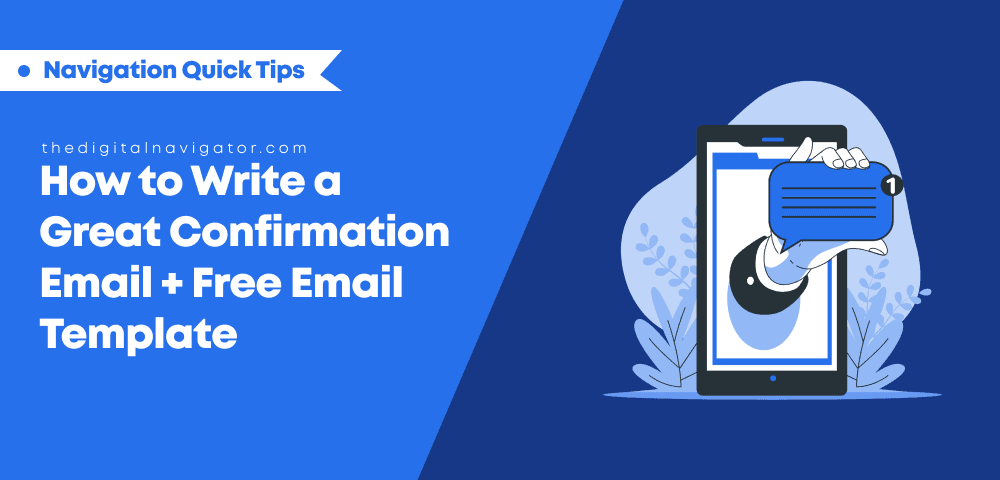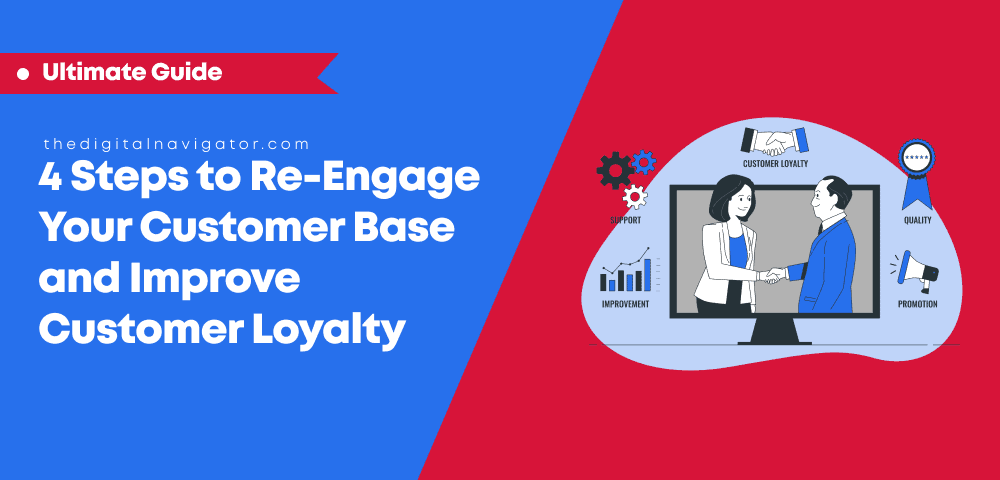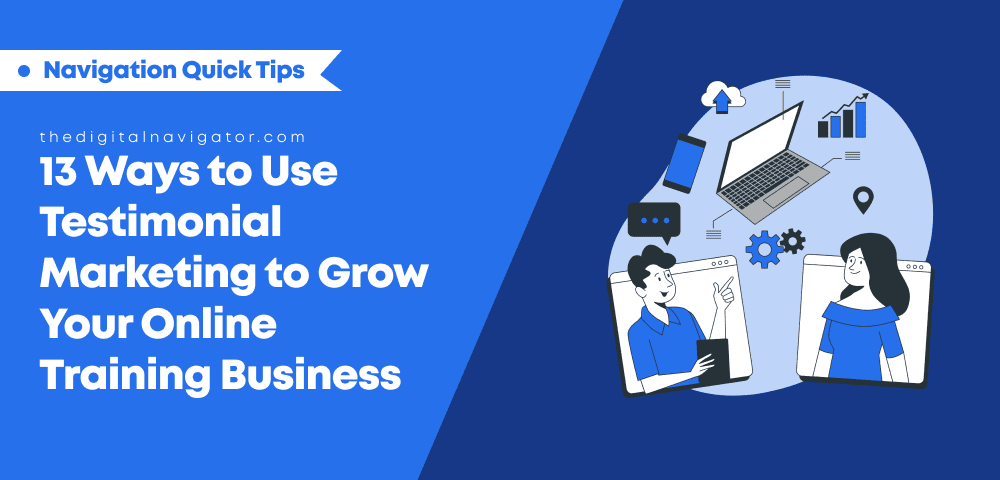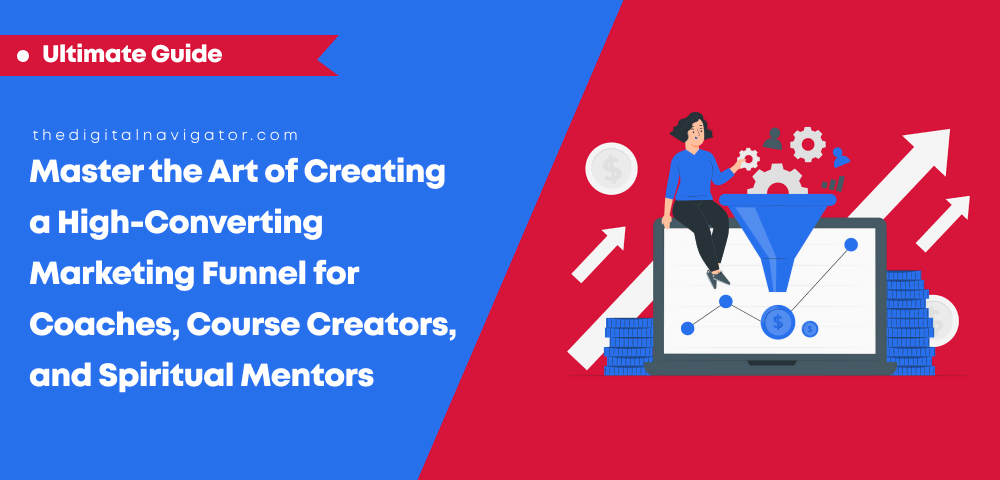The Landing Page Paradox – The Key to Closing More Sales
Reading Time: 5 min
Landing pages can make you spend more money than you’re actually bringing in. Imagine what it would be like if you can have the assets that will help you get more leads and clients without spending lots of money. This is just one publication of the many in a series we’re releasing so you can get maximum ROI for your business.
Today, I’m going to help you understand lead generation landing pages, present an alternative that may be more cost-effective for your business, get some great ideas and avoid making advertising mistakes over again.
What Is A Landing Page
For starters, let me discuss to you what a landing page is. From the perspective of Google Analytics, a landing page is where you are directed to after clicking on a hyperlink. The hyperlink may come from a different web page, email link or other means of first arriving on a website.
But in digital marketing, there’s more to it. It’s no longer enough that you have a home page. This is a make or break page with the objective of turning your visitor into a potential customer. This is the page that allows you to offer deals, free trials, or even a handy checklist in exchange for contact information.
There are two types of landing page according to a structure:

Pro Tip: Make sure you have a follow-up process for any leads you collect from your landing page. A lead isn’t worth much if you don’t have a system to monetize it and generate profit. This can include a low dollar offer on the “Thank You” page after people give you their contact information, automated values and sales email series or notifications sent to your sales representative to follow-up.
Why It’s Good to Have A Landing Page
You get to establish a relationship with your leads.
The landing page allows you an exchange of information with potential clients such as their email. Collecting emails can be very helpful since you get to establish rapport with your leads through multiple interactions. You get to cozy up with them and gain their trust with the use of your sales funnel. And every email they get means they’re more likely to get your services, all thanks to your landing page.

They’re quick to build and can have a different design than your website.
A landing page is stand-alone. The design of the page doesn’t necessarily have to depend on the design of your website or homepage. You get to design your lead capture landing page, Facebook landing page or lead generation landing page with more freedom. Plus, landing pages are easy to create because it’s just a single page. If your current website technology doesn’t allow you to easily create one, you can use popular landing page software such as Leadpages and Unbounce to host your page on a sub-domain such as yoursubdomain.yourdomain.com/landing-page.
There are no distractions.
When an end user looks at your landing page, they won’t see any other unnecessary boxes and information. Their eyes are focused on what your business has to offer, what they’re getting and a call to action. So while they are there, you give your end users a very clear & easy way to take the next logical step in the sales sequence.

Closes a sale quickly.
If you have compelling message on your landing page, you reduce the time frame of having someone considering your business to actually making a final purchase by cutting down the number of steps they have to take.
Pro Tip: Always verify the terms of advertising platforms you may use to drive traffic to your landing page. You don’t want to distract your visitors with a bunch of links. It requires you to offer more than one navigation choices.
People often place these in their footer area and some choose to offer navigation to their website home page through clicking on their logo.
The Downside of a Landing Page
It is costly. Lead generation landing pages can make you spend hundreds or thousands of dollars. It could even be more expensive if it’s done wrong. How is that possible? Every time an end user is not happy with his experience on your landing page, he goes back to the previous page before the landing page. When an end user does that, it sends a negative signal to various advertising platforms.
Same goes for those ads that are reported or other negative signals. Your ad costs will increase. Since this is a winner-take-all approach, because the page itself doesn’t offer much value if the person doesn’t act on your call-to-action, an unappealing offer will result in wasted advertising dollars.
New advertisers pay more.
If you haven’t run ads successfully or didn’t have a long history of making ads, you’re bound to pay more. This is because the advertising platforms aren’t sure as to how customers will react and they are focused on preserving and growing their user base. Ads to landing pages almost always have poorer end user experience.
And as such are riskier for the advertising platforms than ads that lead people to free content that don’t need a lead capture form to access value. It’s unclear the effect this has on Google advertising but new ads on their system do go through an optimization period.
New Facebook advertising accounts do incur this penalty, as explained by famous advertiser Molly Pittman in Perpetual Traffic podcast episode 190. She ran an ad directing traffic to a landing page in a new account with poor results. She pivoted her strategy to doing post boosts and ads to ungated content such as blog articles. She ran very similar landing page ads, roughly 6 months later, and had very positive results.
Unforgiving.
Because landing pages offer little inherent value, you have to double down on your message and offer to make sure it’s amazing. A landing page is like walking to an attractive stranger and asking her phone number within 10 seconds of talking to her. If you don’t do it right, you’ll get rejected and there will be no opportunity for a relationship. Similarly, with a landing page, the only option for a visitor is usually to either give you their contact information or hit the back button.
One trick pony.
It’s difficult to repurpose the work you’ve put into a landing page into other areas of your business. After all, this is meant to make a laser-focused offer.
Not very shareable.
If a person reads an interesting article, watch a captivating video or listen to an insightful podcast, they are likely to share it with another person in their network. This is an act of generosity. On the other hand, people rarely share a landing page that requires their associates, friends or colleagues to enter their contact information to access.
Instead, they may directly share that sweet PDF checklist you gave them or not bring it up altogether. Most people will want an affiliate commission or other exchange of value to
promote your landing page.
Pro Tip: For the majority of new businesses, the downside of a landing page outweighs the benefits. Does it mean you shouldn’t create one? No… but you shouldn’t depend on it. When working with young businesses, it is important for you to create complementary assets that can bring in new traffic and engage prospects, such as articles and Facebook
Live broadcasts.
Ungated Content —Alternative to a Landing Page
You can never get a second chance on making a good first impression.
So let’s say someone is on your landing page and your landing page offers a free eBook. But you can’t give it to him if he doesn’t sign up and provide contact information. Say, for example, he’s skeptical in providing his contact information and refuses to provide such. There are two possible scenarios that can happen. One, he closes your landing page. Second, he goes back to the previous page. Now, that is just a missed opportunity in gaining a customer.
So what other options do you have?
You make use of ungated content. When you say ungated content, it means that someone doesn’t need to share his contact information for him to be able to access what you have. It may be in the form of an article, podcast episode, videos or downloadable PDF worksheets. All these examples can be repurposed in different scenarios. Plus, you can create assets in different formats.
And how does that benefit you?
You get to showcase your expertise and authority before asking for something in exchange.
This is just like having a meaningful conversation with an attractive person. You’re talking to the person, sparking a common interest and getting her hooked to the things you are saying. By the time you end your conversation with her, she’ll be giving her number to you. Same goes for ungated content.
If you’re readers are enjoying your articles and the things you’re saying answers the queries on their mind, they’re likely to engage themselves more with your page. That’s because the articles you have, speaks to them. It’s as if you’re actually talking to them and by the time they finish reading your article, you’ll get their contact information.
You’re also spending less on ads.
Organic SEO will drive traffic to your business site to which advertising platforms tend to prefer this type of content. By running ads for a fraction of the cost of the landing page ad, you can use tracking technology such as the Facebook Pixel to retarget your visitors with future ads. Facebook Pixel maximizes your ad budget by collecting data that helps you track conversion rates of your Facebook ads. Basically, it makes sure that your ads are seen by people who are most likely going to hit the Call-to-Action button.
Pro Tip: If you’re not a writer or unsure where to start, get someone else to interview you as to extract your subject matter expertise. For businesses that engage us to increase their organic traffic (through SEO), we love to interview an expert within their team or the owner. Then we use this to write high-value articles, emails, paid advertising campaigns, and landing pages based on the strategy we’ve mapped out.
Cost-effective Ungated Content for Your Business
A wonderful place for you to start an ad campaign is with a long-form article optimized for search engines (SEO), your existing audience and people having an initial encounter with your business.
To understand the process for generating meaningful leads through this strategy, I encourage you to listen to my interview on how to Get Targeted Leads from Google for a Life and Business Coach. This can be utilized in most industries, small businesses, and businesses focusing on information products. We’ll go through some key factors that you must consider to succeed with this approach.
Expert Insights
For this campaign to be effective, you must provide distinct insights, value and share nuances beyond what your competitors are providing. You want to showcase your expertise to stand out among the pack. If you are thinking of holding back as to avoid giving the farm away, think twice.
Answer common questions and concerns
Create an article outline by researching the top concerns of people in your market. You can gather information from your knowledge of the industry, interviewing your customers, asking your sales team or doing keyword research to identify search terms with tools such as ahrefs and SEMrush. This will make your content relevant for search engines as well as your cold advertising audience.
Include lead capture forms
Just because this isn’t a landing page, it doesn’t mean that you should let your visitors leave your website without providing them ample opportunities to share their contact information with you. Insert forms for people to request consultations, free quotes, download your checklist or access a video series. Since this is optional, it is often perceived better than the same offer on your landing page.
Promote
Create ads on Facebook, LinkedIn, Google or your preferred advertising network to drive traffic to your article. Since you are not optimizing for conversion events (i.e. capturing the contact information), your cost per click and visitor should be much lower than that of a landing page ad. Share your content with your email list, mention it on interviews and contact websites that you feel may gain value from sharing it with their audience.
Repurpose your content
You’ve put a lot of work into creating this asset so you should get the most bang for your buck. This is so important that I’ve devoted the next section of this article to it.
How to Repurpose Your Ungated Content
Repurposing your ungated content allows you to reach more people. Create content that could attract different kinds of learners. Some can grasp your idea with the help of some visuals. Some people learn things by listening. Others, learn by following an example. By making your content available to your audience in their
preferred format they will be more receptive to your message and business.
work, 65% of the population are visual learners. This means that they need to see what they are learning. Hence, infographics can be really helpful.You could turn your blog post into an infographic since most end users tend to appreciate content with drawings and pictures. You could also repurpose your post into guides. Create an easy-to-use guide with numerous aspects on a topic you wrote. Don’t forget to make a really good content that could address the needs of end-users. Create content that meets their desired
end-results.
Email Communication
Your content can be used as an email marketing strategy. It allows you to send customized messages to your potential clients. Your email may contain a teaser leading them to an ungated content. It could also be a marketing strategy that consists of a series of emails that imparts teachings, tips and important information on a certain topic and business.
Podcasts and Interviews
According to Podcast Insights, 51% of the US population has listened to a podcast. You could share your
content by launching a podcast. Not your cup of tea? Or do you find creating a podcast a tedious task? There’s an option you can look into. Check out popular podcasts on iTunes, Stitcher, Podbean or your favorite show directory. Reach out to the hosts and see if they’re looking for guests to their show. Offer something that could benefit them and their audience. This option gives more value to your business rather than creating your own podcast.
Webinars
You have vast knowledge on the business that you have. You can turn your level of expertise into a valuable webinar. A good example of which is a person who has his own cooking school. The person can create a valuable webinar on how to cook for a dinner party using his recipes. He could insert a registration form of the webinar within articles like his recipes for other dishes. The key here is to use this platform to build rapport with your leads, get them more interested and offer them something they couldn’t resist.
Video
As mentioned, some individuals are learn better if they follow by example. This is a great opportunity for you to create a video content and publish it on YouTube. Let’s take after the person with his own cooking school. He can create a 3-minute easy cooking recipe video and adding a link to the webinar on how to cook for a dinner party using his recipes. This can also be a gateway to people who hasn’t watched his webinar
before.

Social Media Posts
Break your article into snippets of social media posts and link them back to your article. The purpose of posting on social media is to engage with your audience. When a person enjoys reading your article, there’s a chance that he shares it on his wall so his friends and family could read it too. With that, you’re exposing your business to more people and increases the likelihood of closing more sales.
Ads
Have ads on LinkedIn, Facebook and other platforms that will link to your article. In most scenarios, you will want to use this as it helps widen your audience/target market. Because it’s on their feed, they’d be intrigued as to what your article is about compared to just running a landing page.
Found this article really helpful and would like to know more? Or do you need help in generating more leads and increasing your list of clients? Schedule a complimentary consultation. When you click on the link, you will be invited to fill out a short questionnaire. This is for me to better understand your goals and challenges as to provide the most value during our time together. Talk to you soon.
Read the transcript of The Landing Page Paradox with Pol
Cousineau
Could this very popular strategy cause your business more money than it’s actually bringing in? I am Pol Cousineau from The Digital Navigator. And on this episode, we’re going to be reviewing one of the most popular advertising strategies online. Whether you have a small business that’s advertising online or you have information, digital product, online training or coaching business. This episode is going to bring a lot of value in two areas of your business. One, it can help you create assets that will actually help you get more leads and clients.
Number two; it can save you a lot of money on advertising dollars. Obviously, you have to do the math for your own business and you’re going to see the pros & cons of the landing
page and what is one of the alternatives that I recommend. So first let’s get started.
What is a landing page?
Well, Google has a different definition of landing page than most advertisers and marketers use. So according to Google, the landing page is the first page from which a person enters your website. So let’s say someone clicks on a link and arrives on an article on your website that would be considered a landing page Google. Because that article is the first page the person arrived on.
Now most marketers, when they refer to a landing page, they actually mean a page that will offer something in exchange for a person’s contact information, normally their email and sometimes their phone numbers. And in other situations, extensive request about their business, their position, number of employees. It really depends on the value of what is being offered to them on that landing page.
For example, if you offer a checklist, a video training series or free report, you would then ask someone to provide their name and email. Once you submit that, they’ll go and receive that in their email inbox. And that would be an example of landing page. You’re probably familiar with that having experienced it yourself in situations or maybe have where you didn’t actually like that experience.
This strategy was very popular when online advertising started. And the reason is, if you were spending ad money like let’s say on Facebook or in Google, you would want to capture the person’s contact information so that you can follow up with that lead.
More than 90% of visitors and some people say such much as 98% never come back to your website after they visited once. So if you don’t capture their information, then you’re really leaving a lot of money on the table. Even at 10%, that doesn’t really excite me.
Now that being said, that direct approach where you’re offering, let’s say, a free report on the state of online training businesses. If I see that ad in my newsfeed on Facebook, maybe it’s on LinkedIn, it doesn’t really matter, and I click on it.
My expectation is to receive that. But if I don’t give you my personal information, because of the landing page, I will not be able to access it. Which means that the page and that experience is useless to me. As the end user, I am going to click back and I will be on that network from which I saw your ad.
So what that does is that it sends a negative signal to the advertising platform such as LinkedIn, Facebook or Google. And it says that the user didn’t enjoy their experience with your business. And now those platforms are very concerned about that. So when it started off, let’s say, having advertising on Facebook, that’s a good example. There was not a lot of market for people putting ads and there were users so they wanted to fill all of the ad availability to maximize their revenue.
But now, the situation has changed where there are a lot more advertisers and people wanting to place ads than there is availability in the market. So now, Facebook can put more emphasis on the end user experience. And they want people to spend more time on Facebook because that will then increase the ability for ad placement and increase their revenue. It’s the same on most of the popular platforms today.
So whenever people back out of your ads or might even send signals like reporting your ads or other negative signals, this will increase your ad cost. And then when people are highly engaged, liking that ad, & they follow through. They might even share it even if it’s just on Google.
If they’re clicking through and enjoying their experience, that sends a positive signal to the advertising platform. And this will help reduce your ad spent, you’ll get more impressions, meaning more visibility of your ad, and ultimately you’re getting
more leads for less money.
So the landing page is very good because it’s direct. You’re telling them what they’re going to get, you’re exchanging their contact information. And if it works, well then, you really cut a few corners. You reduced the total time frame from which you captured that lead information. But because of the changing landscape, that approach does not work as effectively especially for new advertisers.
There was a recent episode on The Perpetual Traffic podcast where Molly Pittman, famous Facebook advertiser, has mentioned that she was working on an account and then she ran ads to a landing page and was not having great results. And then she decided to do ads to content instead, meaning articles and other resources that don’t require contact information and even boosting posts for about (I believe she said) 6 months but please don’t quote me on that.
And then she ran this very similar ad to a landing page and then she was having amazing results. And why did that happen? Because the account she was using for advertising of that business did not have a long history.
If you don’t have a history as an advertiser, meaning you’ve been running ads successfully for a while. Then, the marketing platform is unsure of the experience that you are to be giving their users. So you’re gonna have to pay more to those ads. And we don’t know how the exact calculation of how much you pay and who gets what is done and the specific science to it.
But we do know that the ads that are from the younger accounts actually tend to cost a lot more. So how can you basically offset that negative aspect of being a new advertiser? Because if that’s you and you’re listening right now and you don’t have an extensive ads budget, or you haven’t run any ads or you dabbled a little in it.
Then, you’re kinda stuck in this kind of situation. And this is something that an advanced and experienced marketing advertiser can use as well. Instead of running ads to a landing page, you can produce what you call, “ungated content”. That is content and resources that are accessible regardless of a person actually providing your contact information. A detailed article is an example of ungated content. And I love that approach for businesses because it will actually hit multiple birds with one stone.
One of the things that that does is I mean, this is obviously depending that your content is actually good. You should focus on playing quality content that will help your targeted customers and clients reach their desired end results that they want.
If you’re just putting something, slapping it together really quick, that will not solve the landing page paradox that I just explained with the fact that it is very direct, it saves time, it seem very cost-effective but in the end, it can actually cause you a lot more advertising expenses because of the way that the advertising platform evaluate your ads. So then, what you do with this content is you go in a lot of details as to what your customer’s problems are and you have them solve it.
You can combine this with keyword research, so meaning searching popular search terms that people use on Google then incorporating those into your article. So that will start producing organic traffic to your website or it’s a form of SEO. Then you can have ads on LinkedIn, Facebook or other platforms that will point people to that article. And because you’re not asking for their contact information, the reception tends to be much much better. But that doesn’t mean you need to stop there because you do need to follow up with those leads.
You need to have their contact information. Imagine meeting someone at a conference and not writing down their phone number or email and trying to find them again. It’s almost impossible. So don’t do that.
What you can do, is make an add-on resource. So let’s say that the report you were going to provide in your landing page, you can make that available on your article and you can have boxes that are inline in the middle of your article. You can have things come up in the corner. You have to evaluate the rest and how you want it to be.
Sometimes, annoying people actually pay off and you’re gonna get a lot more leads. And in some other scenarios, that’s gonna create the same negative effect like the landing page experience that we described. So then you’re gonna be providing that opportunity for people to get upgrades and basically getting to their end results faster or with more ease by providing you with their contact information. But that’s totally optional. If you don’t wanna do that, you can still access that article.
Once you’ve published that article, you can repurpose that in many ways so you can get the maximum value of your investment as a business. What do I mean by that? Well, you can break it down into small social media posts and then either link that backs to your article or not. Just engaging in a conversation with your audience, you can create multiple types of ad sets.
You could decide to create a landing page with the free download that is available in that article and retarget people. Meaning, sending the visitors of your blog now to your landing page to one of the advertising platforms. You can write email content to engage your audience with that. You can write video content.
You can do podcast interviews and either podcast on your old platform or getting booked as a speaker on someone else’s podcast. There are many ways that you can reuse that content and get maximum benefit from that.
If you found this useful, I encourage you to comment below as well as get in touch. We offer some complimentary consultations. You’re gonna have to fill out a short form of your business. I can understand some of the challenges that you’re facing. And we can see if we’re the right fit to help you out. Meet for a short meeting and provide for some valuable insights for your business.








0 Comments